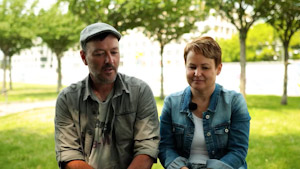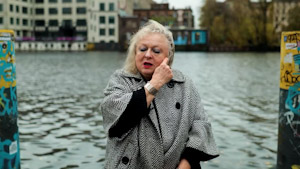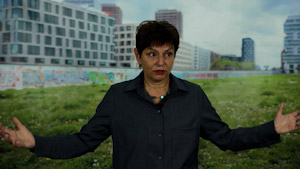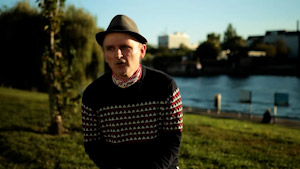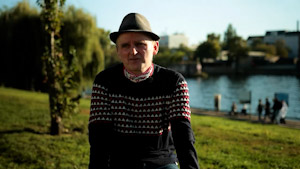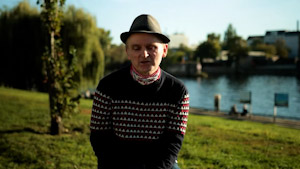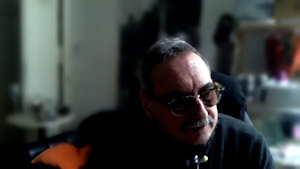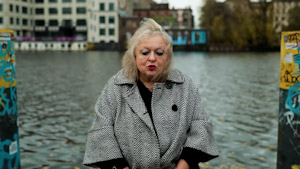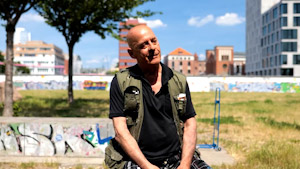1990: The Wall Must Go!
After the fall of the Berlin Wall in November 1989, there was a broad consensus for removing the barrier from the cityscape. In early summer 1990, the GDR government began dismantling the 155-kilometer-long border fortifications. Practically overnight, however, the Wall had become a symbol of the peaceful revolution and it rapidly became a hot commodity. So-called wall peckers were chipping large and small pieces of concrete out of the Wall to sell as souvenirs. The GDR government also began selling pieces of the Wall that had been painted by West Berlin artists.
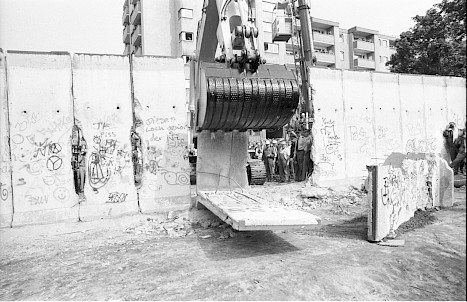
"This is a public matter, this East Side Gallery. [...] Unlike some people who nearly have a heart attack if there’s a tag on their mural, I don't think it's that terrible. It kind of fits."
Berliners and politicians had adopted the motto "The Wall must go!" but the historic conservation authorities were exercising restraint. The artists at the East Side Gallery had painted their murals under the assumption that they would be temporary. Some, like Stephan Cacciatore, even planned the Wall’s demolition in a message contained in their murals. Others supported the idea suggested by ad agency "Werbe- und Veranstaltungsagentur GmbH" (Wuva), which proposed taking the Gallery on tour and selling it. Most of the artists wanted the Gallery to stay where it was and the district of Friedrichshain-Kreuzberg rejected the Wuva's idea. After months of uncertainty, the East Side Gallery's future was settled when the state of Berlin granted it protection as a historic monument in November 1991.
Thereafter, it was the artists who struggled to preserve their work. Damage caused by exhaust fumes from nearby traffic, exposure to the elements and graffiti meant that they had to repaint their paintings numerous times. In 1996, the "Künstlerinitiative East Side Gallery e.V." was able to raise funds for the restoration of parts of the Gallery. Tourists from around the world flocked to Mühlenstraße to see the paintings on the famous wall.
"Please don't put graffiti on our paintings. It makes me really very sad when I see the scribbles that people have left on the art we've been working on for many years. It's disrespectful. Please don't do it."
2000: The Wall Should Be Preserved
In the early 2000s, the attitude of Berliners and politicians towards the Wall changed. By then, only a few relics of the Berlin Wall were still on display in the city. Berlin had become a popular destination for tourists, many of whom visited the city to see the former barrier. The state of Berlin and the federal government decided to preserve a few sections of the Wall for posterity. The Berlin Wall Memorial on Bernauer Straße in Berlin-Mitte was established as a national monument to document the history of the divided city and to commemorate the victims of the Berlin Wall. The East Side Gallery and other former Wall sites followed later as decentralized monuments. The Gallery’s profile as a monument with a dual character was reinforced: it was a historical relic of the Berlin Wall and the divided city, as well as a contemporary document of the fall of the Wall and the unique art action of 1990. Today, there are still three long sections of the Berlin Wall in the city, at Bernauer Straße, in front of the Berlin Parliament on Niederkirchnerstraße and at the East Side Gallery.
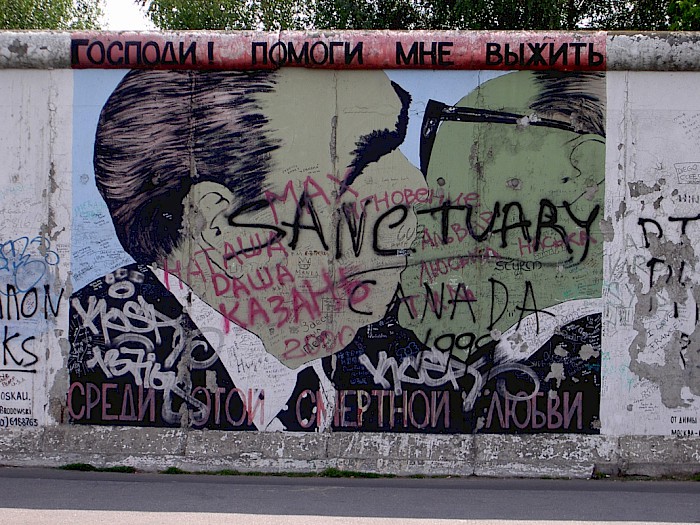
“It is the greatest peace monument in the world."

“… And there were a lot of young people, real hordes of them. And they were all suddenly interested. They stopped and looked and asked questions. And I said, this is really great because this is not a gallery where you have to pay admission, where you have to deal with history, where you don’t understand the pictures. Here they can stroll by and eat an ice cream and think about the motifs.”
2009: Renovating the East Side Gallery
The East Side Gallery was in poor condition at that time. The artworks were rapidly disintegrating. As part of the 20th anniversary celebration of the fall of the Wall, the state of Berlin, in cooperation with the district of Friedrichshain-Kreuzberg and the artists' initiative, resolved to completely renovate the Gallery. To repair the underlying masonry, the murals had to be partially or entirely removed through sandblasting. The artists were invited to repaint their works on the Berlin Wall 20 years later. Thus, a new East Side Gallery was created. The pictures we see today are not the originals from 1990, but the copies created in 2009. The historic conservation authorities decided to manage the Gallery differently than other monuments, such as the Berlin Wall Memorial. According to the State Office for the Protection of Monuments, the Gallery’s authenticity as a historical site is not based on its original substance but on its cultural value. The Gallery stands today as a symbol of the newly achieved freedom of 1989 and attracts more than four million visitors a year.
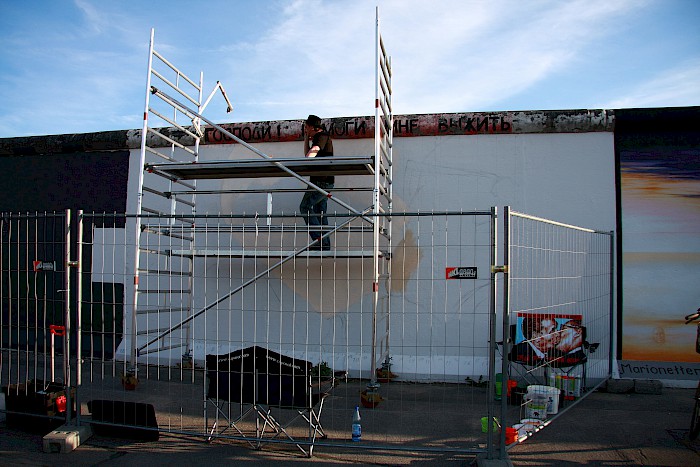
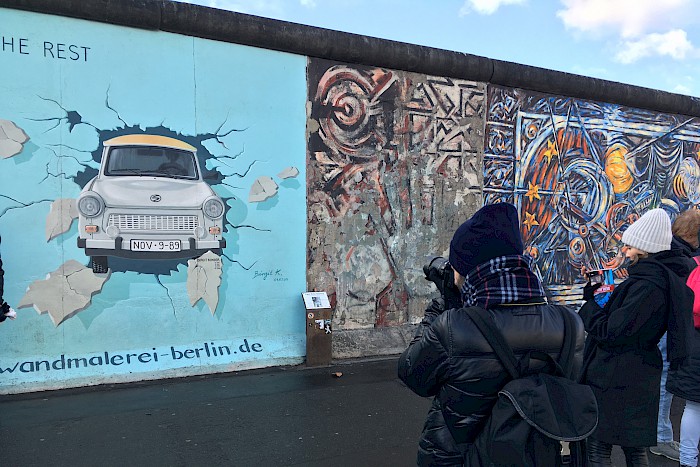
“The decision was made to preserve the art and not just let it be. But I was okay with that. It’s quite nice to see a work of mine preserved for posterity.”
The East Side Gallery as a "living monument"?
The Berlin Wall Foundation has been tasked with preserving the Gallery in its 2009 form. This includes keeping the back of the Gallery white. New graffiti is not allowed and is quickly removed. Before 1989, the GDR kept the back of the Berlin Wall white so that GDR border guards could see escapees more easily. According to the State Monuments Office, the white paint is a reminder of the time of division and illustrates the dual character of the East Side Gallery. That the East Side Gallery has been a central place for graffiti artists and the style writing scene since 1990 and that both the back and the front of the wall has long been a place for art was of secondary importance.
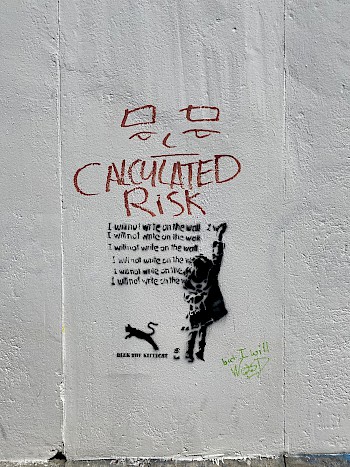
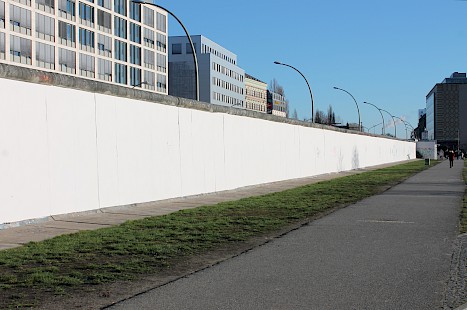
Since its renovation was completed in 2009, the matter of how to deal with the art at the East Side Gallery has been a matter of debate. For many artists, art in public space is not meant to be preserved for posterity. They want to be able to amend their pictures to the present and express their changing styles. The artists are not alone in viewing the East Side Gallery as a "living monument" and in criticizing the musealization of their art. Many visitors, sprayers and writers also see the Gallery as a place to express themselves and to comment on political events through artistic expression.
Contemporary witnesses remember
Additional information:
The video shows the East Side Gallery in 1990. The first works of art are already finished: https://www.youtube.com/watch?v=jOqyt1Y5tH8
Podcastfolge zum Umgamg mit den Überresten der Berliner Mauer: Die Podcast-Reihe „Grenzerfahrung“ von der Stiftung Berliner Mauer entstand 2021 anlässlich des 60. Jahrestags des Mauerbaus und wurde gefördert von der Bundesbeauftragten für Kultur und Medien. Die Folge „Teilung – Einheit – Mauerspuren“ fragt nach dem Umgang mit den historischen Spuren der Teilung in Berlin. Expertinnen und Experten diskutieren über die Bedeutung der Spuren als Erinnerungs- und Bildungsorte, u.a. geht es um den Erhalt der East Side Gallery aus der Sicht der Stiftung Berliner Mauer und des Künstlers Günther Schaefer. In dieser Folge geht es außerdem um die Auswirkungen des Mauerfalls und des Vereinigungsprozesses auf Menschen, die als nicht Deutsch gelesen wurden. https://www.stiftung-berliner-mauer.de/de/stiftung/podcast-grenzerfahrung
